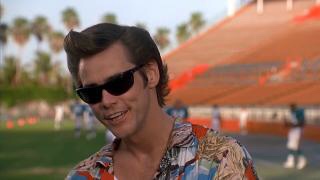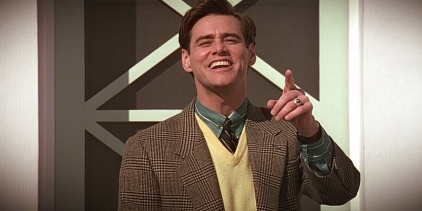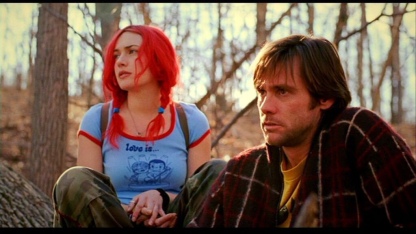40 for 60. That was the mantra for what could be argued as the best Vikings squad to ever take the field.
Bud Grant, finishing his third season coaching with the young franchise, led the talented, yet tough Vikings to a franchise best 12-2 record and their first appearance in the big game: Super Bowl IV.
Although considered a contemporary problem for the franchise, getting to the big game proved to be an impossible effort for the talented squad in the ‘60s.
The Vikings, after stumbling through their franchise’s infancy dating back to 1961, began to build their roster with their newly appointed head coach, Bud Grant, in 1967 after the coaching tenure of former NFL star, Norm Van Brocklin (also known as the “Dutchman”).
What most people do not realize about the 1969 Minnesota Vikings is that they had a real shot at making it to the Super Bowl the previous year.
In 1968, the Vikings were playoff contenders and advanced to face the eventual representative of the NFL in the Super Bowl: the Baltimore Colts. It was a game in which the Colts’ Memorial Stadium was covered in mud. Joe Kapp, the team’s rough-and-tough starting quarterback, provided a valiant effort as the game’s leading rusher with 52 yards, but was battered around all afternoon as the Vikes fell to the Colts 24-14.

Joe Kapp under center in a snowstorm at Metropolitan Stadium.
Kapp’s journey to the purple and gold was not a traditional one, to say the least.
After leading the BC Lions to a CFL Championship appearance in 1963 and a championship victory the following year (while being an all-star in both seasons as well), he held a desire to return to the U.S. to play professional football (he went to college at Cal Berkley). Grant and General Manager, Jim Finks – needing a replacement for the newly traded legend, Fran Tarkenton – both had experienced Kapp’s success in the CFL and wanted him to be their guy.
A multi-player trade occurred between the Vikings and the BC Lions that allowed Kapp to switch leagues in order for numerous Vikings players to switch over to the CFL.
- After a rough start to his NFL career statistically, Kapp bounced back in 1969 to career highs with 19 TDs and 1,072 yards through the air, earning him a Pro Bowl selection. He also broke an NFL record by throwing for 7 TDs in one game against the Colts, the team that knocked him and the Vikings out of the playoffs the year before.
The other aspect likely incorporated into the decision of his Pro Bowl honor was his leadership. He was a fierce competitor that was the ultimate team player, often rallying the troops on the sidelines, commanding respect in the huddle, and never being afraid of putting his body out on the line to help the team.
Kapp is also famous for choosing not to accept the team MVP award given to him that season, stating that they win and lose as a team and he could not accomplish the feats he did without his teammates.

The defensive linemen, known as the “Purple People Eaters,” sit together on the bench.
The real MVP of the Vikings, though, was their defense.
Stars like Alan Page and Paul Krause joined forces with the likes of Carl Eller and Jim Marshall to form the famous defensive nickname, “Purple People Eaters.”
The smashmouth-style defense, mostly known for their legendary defensive line, dominated opponents in the late ‘60s and early ‘70s. They led the NFL in least amount of points allowed with 133 points, ranked as the number one team in pass defense with 116.5 yards allowed per game, and number two in rush defense with 77.8 yards allowed per game.
The “Purple People Eaters” invoked fear in the hearts and minds of opposing offenses, stopping them in every facet imaginable.
As explained in the episode of America’s Game: The Missing Rings about the team, Kapp was injured before the start of the season and did not start in the opener. Gary Cuozzo, the popular backup quarterback formerly under Johnny Unitas with the Colts, took the reigns and did a solid job, but the Vikes fell short of their former star quarterback, Fran Tarkenton, of the New York Giants: 24-23.
Kapp would return the following week and break the passing touchdown record vs. the Colts.
You also have to keep in mind that the NFL back then was quite a different landscape than it is today. It is often referred to as the “Dead Ball Era,” meaning that the rules of the game and the style of which it was played does not compare statistically in the slightest to the NFL today.
The rules did not favor the offense, including the quarterback position. The defense could body slam the ball carrier and not get penalized for it. In fact, it would be encouraged. Offensive lineman were limited with how they could pass block and pass interference did not exist like in the way it does today.
Most games were low scoring because of the ground-and-pound approach most teams used. The phrase “offense sells tickets, defense wins championships” was even more prevalent in the ‘60s.
In a way, this Vikings team benefited from the rules of that era.
Their defense would demolish opposing offenses and their run-heavy mentality made life easier for that vaunted defense.
Considering the bitter cold location of the team and their strong demeanor, the cold weather only played to their strengths even more. Offenses struggled with footing and speed was taken out of the equation. With how tough the Vikings defense was, adding the fact that the heart of their defense was on the defensive line, teams could not run or move the ball against them.
The Vikings embraced the cold – Coach Grant would not even allow heaters to be on their sideline during the game – as they would let the opposition take themselves out of the game.

Jim Marshall reaches out to grab Rams quarterback, Roman Gabriel. Image rights go to getty images.
The Vikings first two playoff games in 1969 (and technically 1970) were indicative of that notion.
Their first of two home playoff games saw them hosting the Los Angeles Rams.
They were led by their All-Pro QB Roman Gabriel, whom won the NFL MVP award that season by throwing 24 TDs compared to only 7 INTS.
They also had a staunch defense of their own, known as the “Fearsome Foursome.”
The Rams had quite an interesting season, to say the least. They started off winning their first 11 games (still a team record to this day), but found a way to lose their final 3 games of the regular season. That is what helped the Vikings secure home-field advantage throughout the playoffs.
The cold, steam-breath Rams gave the Vikings everything they could handle.
The usually dependable and solid halfback Bill Brown fumbled early in the 1st quarter and an offsides call against our defense nullified a pick-six by DE Carl Eller. Gabriel took advantage of the miscue and led the Rams down the field and into the endzone to take the lead.
Despite Kapp coming out of the gate throwing after the Rams touchdown and leading the Vikings down the field to score a touchdown of their own (a run up-the-gut to Dave Osborne), the Rams would go on to score 10 unanswered points, leading 17-7 at halftime.
A wake-up call to a team destined to reach the Super Bowl.
Despite two poor interceptions in the early stages of the second half, Kapp led the team down the field and scored two TDs – the first being a run by Osborne and the second being an outside keeper by Kapp – which gave the Vikings a 21-20 lead.
A sack for a safety by Carl Eller and an interception by fellow lineman Alan Page secured a 23-20 comeback victory for the Vikings and an opportunity to compete for the NFL Championship and Super Bowl (remember, those were two completely different games back then since the NFL champion and AFL champion competed for the Super Bowl).

Joe Kapp under center yelling the snap count. Image rights go to getty images.
The Browns stood in the Vikings path, but did not stand a chance against the purple gang. The Vikings were led out of the tunnel by their All-Pro center, Mick Tingelhoff, and they did not look back.
The Browns took a beating as the Vikings earned their NFL Championship by winning the game 27-7.
There were three iconic moments during the game at Metropolitan Stadium (back when the Vikings and Twins shared an outdoor stadium built for baseball).
The first of which occurred in the first half when the Vikings had the ball down inside the 5-yard line. Kapp turned to hand the ball off to Brown and instead they collided with one another. Kapp turned, held onto the ball, and fought his way through Browns defenders to score a touchdown. Talk about toughness.
The second big moment occurred late in the 3rd quarter when Kapp scrambled out to the right and took off upfield. He collided with Browns Pro Bowl linebacker, Jim Houston, and to everyone’s surprise, Kapp was the one that was able to get up from the hit.
The final iconic moment involved the fans overrunning the field and taking down the goal posts in celebration. The Vikings were going to the Super Bowl.
January 11, 1970. New Orleans, Louisiana. Tulane Stadium. The biggest moment in the franchise’s history as the Vikings are set to take on the AFL Champion, Kansas City Chiefs.
Everyone predicted the Vikings to win. In fact, they were 14-point favorites.
The NFL had just lost its first Super Bowl the year before in stunning fashion after winning the first two handily – the first one against the same Chiefs team – and, in the eyes of the NFL, the Vikings were supposed to show the world that the previous Super Bowl was only a fluke. The NFL had always been the superior league and were supposed to prove that theory true again.
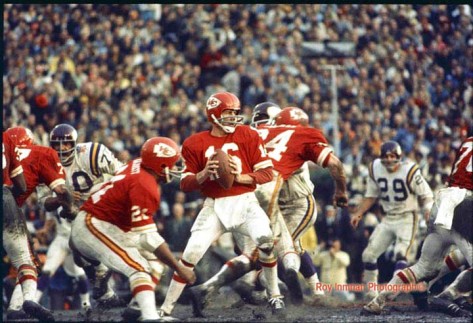
Chiefs quarterback, Len Dawson, drops back to pass in Super Bowl IV. Image rights go to Roy Iman Photographics.
Everyone was in for another huge surprise on that afternoon – even the Vikings fan involved with the hot air balloon debacle on the field before the game.
The Chiefs head coach, Hank Stram, utilized a confusing offense to defend, known as: “Hank Stram’s Wild West Variety Show.”
The AFL in general was known for being more of a wide-open, high-octane league with lost of points (and even introduced the two-point conversion).
This gave the Vikings some problems in terms of defensive assignments. When watching highlights of the game, you can see moments where even the Vikings star-studded defensive linemen do not know where to lineup against the Chiefs underrated offensive line, which performed phenomenally that day.
That is just it, though. The Chiefs were an underrated football team from top-to-bottom.
They had a visionary head coach for that era in Stram – whom is also well-remembered for being an entertaining person to have mic’d up.
They had a future Hall of Fame quarterback in Len Dawson. They also had other future Hall of Famers on their roster, such as wide receiver, Otis Taylor, linebacker, Willie Lanier, and safety, Johnny Robinson.
Don’t forget that they also had to take on the likes of the previous powerhouse AFL Champions: the Oakland Raiders and the New York Jets – which one could argue was a tougher road to the Super Bowl than the Vikings taking on the Rams and the Browns.
Needless to say, the Chiefs and the AFL were for-real and the entire football world were sleeping on them.
Super Bowl IV was a game remembered for plays like the infamous “65 Toss Power Trap” and the quick hitch pass to Taylor that he took to the house for a game-sealing touchdown.
It was also remembered for the lack of a Vikings running game and the beating that Kapp took at the hands of the Chiefs defense.
Late in the game, Kapp threw two INTs – one to Lanier over the middle and the other to Johnny Robinson on a deep ball – effectively ending any hope for the Vikings, but it was the hit he took on the following possession that sums up his afternoon.
In what has since become known straight from the sources as a difference of opinion in terms of play-calling, Kapp called a bootleg to the left. As he did so, he was slammed to the ground and fumbled in the process, turning it over one last time.
The image of Kapp, perhaps the toughest Viking, staying on the ground around the Vikings’ 13-yard line and favoring his left side – officially diagnosed as a dislocated shoulder – is the moment that everyone knew that the Chiefs and the AFL were for real.
Outside of a possession on offense and defense to open the second half, the Chiefs were in complete domination of the game.
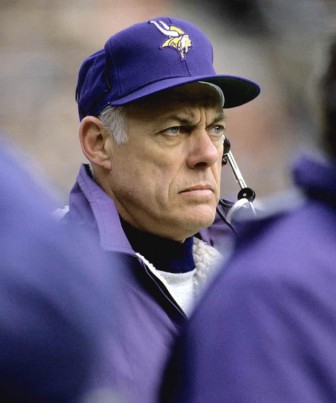
Bud Grant on the Vikings sideline.
The entirety of that game changed everything moving forward.
The following season in 1970 saw the NFL and AFL merge together into one professional football league, the NFL, with two conferences: the NFC and the AFC.
The Vikings’ loss to the Chiefs would ultimately foreshadow the following three Super Bowl losses in the ensuing decade under Grant.
Kapp would fight through a contract dispute and never play for the Vikings again. He wound up being traded to the New England Patriots. After one lackluster season, he was out of the league.
The defensive stars would remain and dominate for many years to come, but even bringing back Tarkenton and drafting Hall of Fame halfback, Chuck Foreman, wouldn’t help the Vikings overcome their Super Bowl woes.
The 1969 Minnesota Vikings are not universally thought of as the best Super Bowl team under Grant, but it is a widely conceived notion that this game not only had the most importance for the team moving forward (much like the Buffalo Bills in the ‘90s), but was also the Vikings’ best chance at winning a Super Bowl.
Despite not ending the season they way they would have hoped, they proved themselves as a legitimate contender and paved the way for many great years ahead for the franchise.
Even 50 years later, this team is still quite memorable in the eyes of Vikings fans and for those interested, there is an excellent book about the team, titled The Last Kings of the Old NFL: The 1969 Minnesota Vikings by Pat Duncan.
Even though the Vikings couldn’t finish they way they would have hoped, their legacy will live on forever.




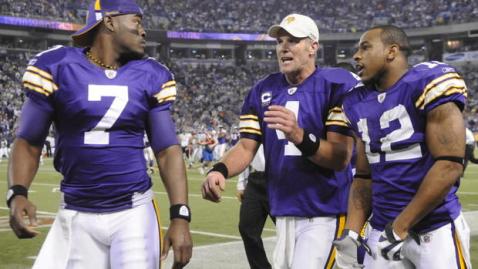

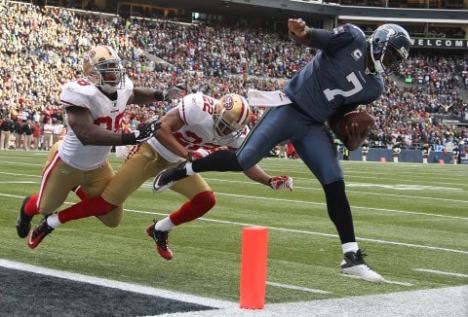



 Honorable Mention: Michael Keaton
Honorable Mention: Michael Keaton
